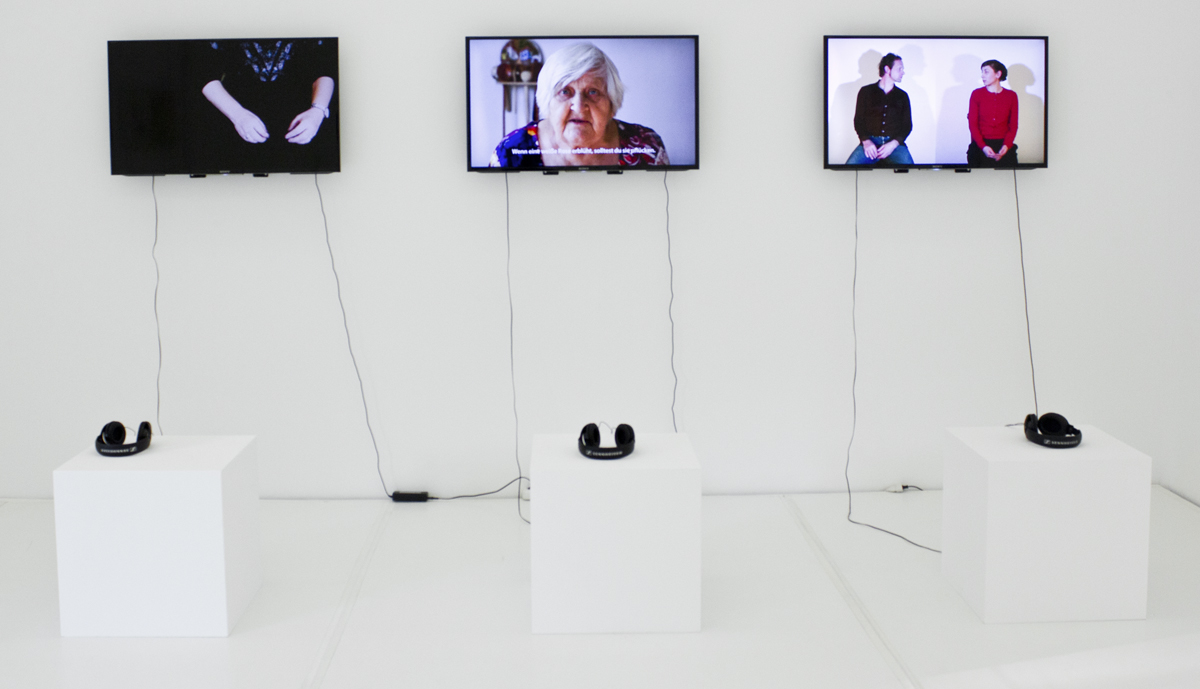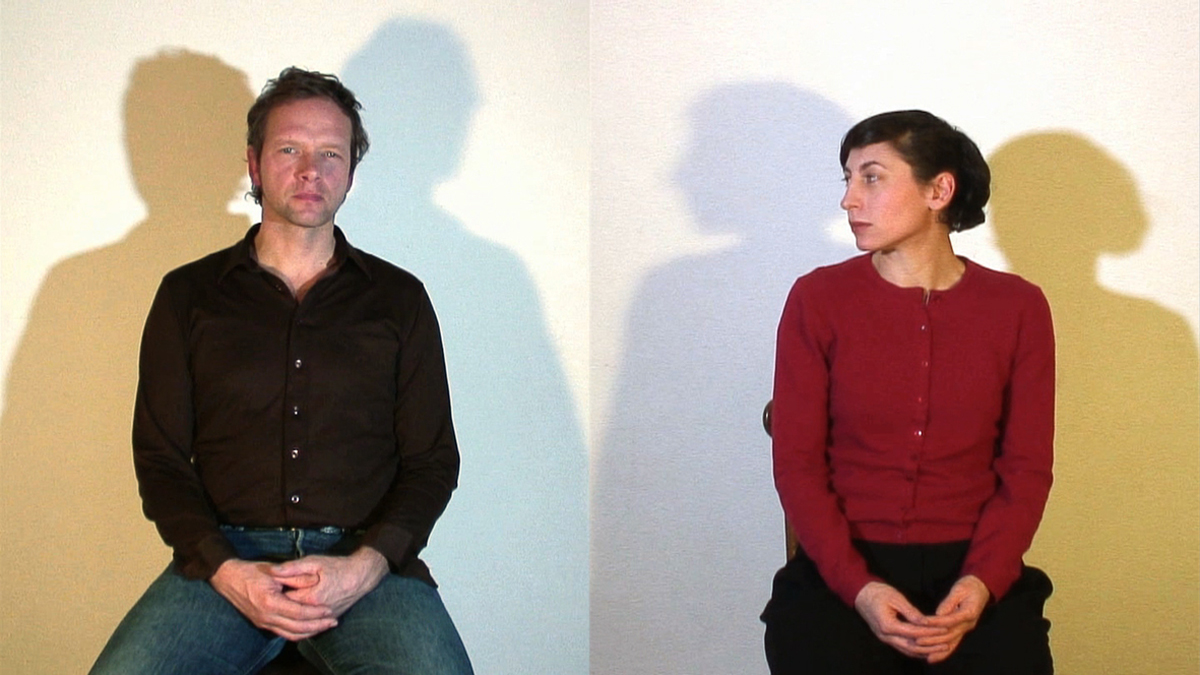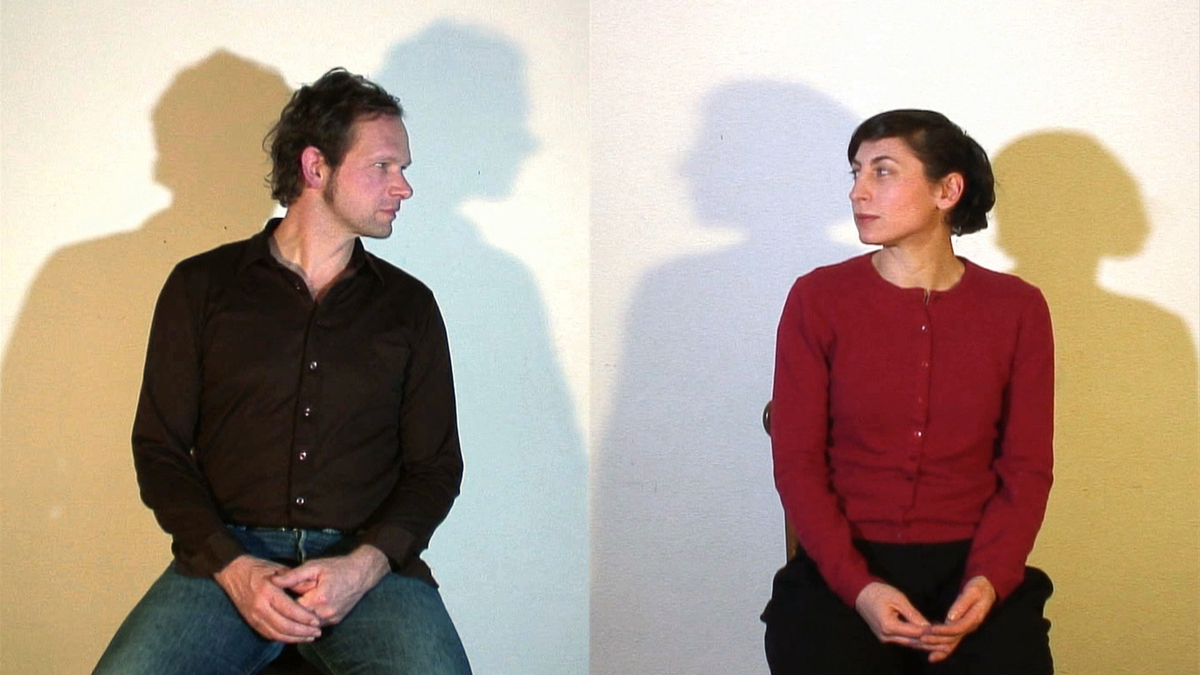3 VOICES
video
video
colour / words in de / en / sk // speaker german / english: Markus Heinicke + Anna Mendelssohn / Offtext slowak: Miriam Bajtala
distribution: sixpackfilm / duration: 12:54 min.
2011
The starting point of the video 3 voices is a text, which deals with my emigration to austria: the social and economic
conditions, the appropriation of language (language acquisition), the language loss (loss of language). On display are two performers, who speak the text in German (Markus Heinicke) and English (Anna Mendelssohn). The slovak part (of the text) is heard as off-screen voice. 3 voices is not a translation, although you hear a text in three languages. It is not a dialog, although two persons are visible, who speak and relate in part to one another. The film shows in laconic form an approach to history, language, expression and what can mean to be dumb. It is a speaking to win/to gain language in front of a camera. What is necessary is said: from the german, as the starting point, the speaking returnes over the english to the slovak language: I own the language, I have almost lost. (mb)
“They didn’t tell me, a five year old, that we were leaving the country. I went to nursery school, and blabbing about the plan might have been dangerous. Instead, they said we’re going on a long trip.” Miriam Bajtala begins her 3 Voices with this quote from writer Vladimir Vertlib. A man, a woman and the artist’s voice, from off screen, tell a story of migration
with an autobiographical background in three different languages, Slovak, German and English.
Pauses and overlaps add rhythm to the performance, in the course of which the two actors repeatedly underline what they say with gestures. It seems as if the narration is being carried over to their bodies.
Solely the voice of the artist, who speaks Slovak, the “old” language, remains disembodied, both present and absent at
the same time. The two actors remain isolated, and only gradually do we notice that they are in two different rooms.
But this work’s main focus is the examination of a foreign language that in this case represents a completely new life:
“In some way the new language did finally rain down upon me,” is said at one point. Repetition — an inherent part of the film, as the story is told three different times — is one of the most important techniques when learning a language. However, at the end of the film a question is posed: “When does repetition become recognition?”
Miriam Bajtala’s subtle and concentrated work reflects in a complex manner on appropriation and becoming native in
a new language and a new country. At the same time it also carefully explores the limitations of human communication. (text by Nina Schedlmayer)
distribution: sixpackfilm / duration: 12:54 min.
2011
The starting point of the video 3 voices is a text, which deals with my emigration to austria: the social and economic
conditions, the appropriation of language (language acquisition), the language loss (loss of language). On display are two performers, who speak the text in German (Markus Heinicke) and English (Anna Mendelssohn). The slovak part (of the text) is heard as off-screen voice. 3 voices is not a translation, although you hear a text in three languages. It is not a dialog, although two persons are visible, who speak and relate in part to one another. The film shows in laconic form an approach to history, language, expression and what can mean to be dumb. It is a speaking to win/to gain language in front of a camera. What is necessary is said: from the german, as the starting point, the speaking returnes over the english to the slovak language: I own the language, I have almost lost. (mb)
“They didn’t tell me, a five year old, that we were leaving the country. I went to nursery school, and blabbing about the plan might have been dangerous. Instead, they said we’re going on a long trip.” Miriam Bajtala begins her 3 Voices with this quote from writer Vladimir Vertlib. A man, a woman and the artist’s voice, from off screen, tell a story of migration
with an autobiographical background in three different languages, Slovak, German and English.
Pauses and overlaps add rhythm to the performance, in the course of which the two actors repeatedly underline what they say with gestures. It seems as if the narration is being carried over to their bodies.
Solely the voice of the artist, who speaks Slovak, the “old” language, remains disembodied, both present and absent at
the same time. The two actors remain isolated, and only gradually do we notice that they are in two different rooms.
But this work’s main focus is the examination of a foreign language that in this case represents a completely new life:
“In some way the new language did finally rain down upon me,” is said at one point. Repetition — an inherent part of the film, as the story is told three different times — is one of the most important techniques when learning a language. However, at the end of the film a question is posed: “When does repetition become recognition?”
Miriam Bajtala’s subtle and concentrated work reflects in a complex manner on appropriation and becoming native in
a new language and a new country. At the same time it also carefully explores the limitations of human communication. (text by Nina Schedlmayer)


